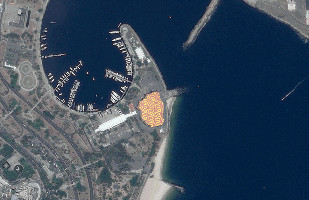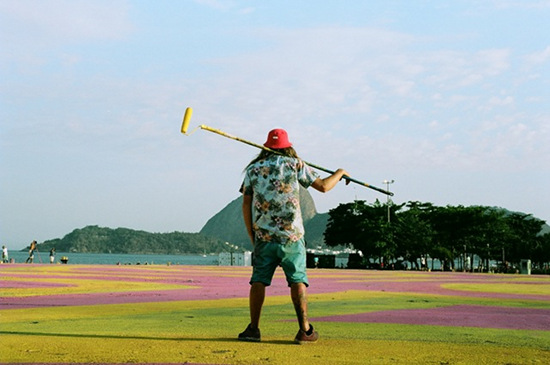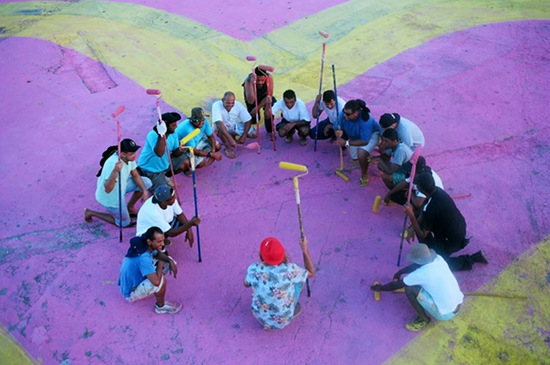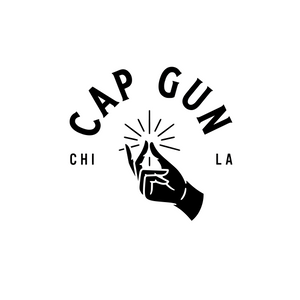
Your Shot: How Ballantine’s Whisky Created a Gif from Space

In late 2014, after nearly a year of planning, whisky brand Ballantine’s landed in Rio de Janeiro with ‘gif-iti’ artist INSA to create the world’s largest animated gif. And the result? Well it’s just a teeny bit awesome, amazing, beautiful and more. Created by M&C Saatchi Sport and Entertainment and directed by Cap Gun Collective’s Novemba (Blair Macdonald and Oliver Clark), the final three-minute film involved capturing four stages of INSA’s giant artwork over four days via a satellite (!) orbiting 431 miles above Earth. We just needed to know more. LBB’s Addison Capper spoke with M&C Saatchi Sport & Entertainment Senior Account Director Alex Wilkinson, Directors Novemba, Founding Partner of production service company Vagabond Films, Lorenzo Benedick, and Rushes Senior Producer Sarah Beckman and Colourist Simona Harrison.
LBB> What was the initial brief from the client like and what were you thinking when you first started working on it?
AW> As briefs go, it was a dream one. Peter Moore and the Ballantine’s brand team tasked us with globally amplifying the 'Stay True' brand positioning and associated ad campaign created by our sister agency M&C Saatchi. There was no pre-conceived expectation about what the solution looked like – we were given a blank sheet of paper. However, this was a major global campaign and expectations were understandably sky high.
Our approach to the brief was to identify individuals from across the globe who epitomised Ballantine's Stay True spirit and work with them to create inspirational films, social and PR content which would help drive affinity and inspire people to engage in the brand idea themselves.
The heart of each film was to be a personal narrative and a form of experiment, something rooted in and inspired by the personal experiences or passions of the protagonists, something universally captivating which would appeal to audiences no matter where they were located.
LBB> Why did the initial brief from the agency appeal to you guys (Novemba)?
N> The initial brief was to create a series of films about creative people who embody Ballantine’s ‘Stay True’ attitude. This film featuring INSA is the third we’ve made in an on-going series for Ballantine’s. The films are part documentary, where we find out about the chosen artist and what makes them tick, and part experiment, where we push their art forms to new limits.
It was immediately appealing because M&C Saatchi Sport & Entertainment were looking to collaborate with us as filmmakers to find these creative people and develop interesting concepts with them. As long as the talent fit the brief, we were free to explore any creative avenue that came up. Briefs don’t get much better than that.

LBB> So… a satellite! Talk us through the logistics of working with one of those…
AW> Luckily our very trusted production partners Cap Gun oversaw the satellite logistics. Whilst we all assumed you should be able to hire satellites, it’s fair to say we’ve all learnt a hell of a lot about them during the project. The biggest challenge was aligning dates in terms of weather suitability, INSA’s availability and location. But our partner Airbus were fantastic and helped us get everything coordinated. In case anyone's interested, it turns out you can’t text a satellite in the morning and task it to take a picture where you want, later that day – it takes weeks.
N> Airbus was the company we worked with, and the particular satellite was a Pléiades1A/1B model. They have a network of satellites that can be hired to take pictures of an area anywhere on earth. Satellites with cameras are generally used for agriculture, scientific research, security and surveillance. We were excited to be the first commanding one for the creation of an artwork. We’re also pleased that the search for the ultimate drone shot is finally over
LBB> How early on did the satellite become part of the idea?
AW> In the very first conversation we had with INSA it became clear that he saw outer space as the natural evolution of his work – this idea was the ultimate combination of scale, distance and time. It's really the ‘Stay True’ definition of him and his talent, and from day one we and the Ballantine's brand team were sold.
N> The satellite was always integral to INSA’s idea. It is the idea. INSA’s GIF–ITIs are made by painting and then repainting an artwork many times, and taking photographs of each layer as he does. He then stitches these photos together to make an animated gif. The process is essentially the same on this occasion but on a much larger scale with our lens attached to a satellite 431 miles above the earth.
LBB> Where did the painting take place? How tricky was it to find the perfect location and why?
N> We shot in Brazil because it was somewhere INSA had always wanted to paint and it is also happens to be a big market for Ballantine’s, so there was a natural fit. From there, the search narrowed down to three factors: weather, a location with interesting surroundings, and of course, budget.
You can never predict the weather, so we had to take some calculated risks. We were told that Rio was generally very sunny at the time of year we needed to shoot, but knew from previous trips that there are often afternoon showers and thunderstorms, regardless of the weather reports. The north of Brazil was a safer bet weather-wise but the locations we were seeing couldn’t be realised on budget.
The location we chose is the large car park of Marina Da Gloria, hugging the coastline of Rio’s harbour. The chosen location met all of the requirements with the least risk. The surface was large enough to be captured from space, the surroundings were stunning, and with some hard haggling from our production team, the space came in just on budget.
Anyone flying into the domestic airport at Rio (Santos Dumont) should still be able to see the final image if they look out the window when landing or taking off.
LB> Finding the perfect place was quite complicated because we not only needed a very large area, but also a location that could be photographed by the satellite.

LBB> What key challenges did working with the satellite bring?
N> Before anything was agreed, Airbus first did a feasibility study to determine whether their satellites could take pictures of the particular area on the days requested. The study took two weeks and once approved, we were then given a slot of exact times the satellite could take a photograph, one each day, for five consecutive days (four days plus one weather day allowance). The times given are exact to the millisecond so we had to be ready on earth when the time came each day. The image on day one was to be taken at precisely 10:19:29:25 local time. At first glance we thought these numbers might be coordinates of some sort.
LB> The biggest challenge was finding an area that had reference points to facilitate the location of the satellite. Marina da Gloria in Rio worked out well because it’s right between the Sugarloaf Mountain and the Santos Dumont airport.
LBB> I love INSA’s ‘gif-iti’. How did you stumble across him? Who discovered him?
N> On this occasion we found INSA and presented him to the agency. We were specifically researching art-based talent for this film and came across INSA’s highly distinctive GIF–ITI work online. We immediately thought he would be perfect for the film and set up a meeting to discuss concepts.
AW> We work creatively hand-in-hand with Novemba and Cap Gun. As with all great ideas, we can't be sure who first suggested INSA, but it was most likely Oliver and Blair.
But it's important to say that finding someone that a bunch of guys in Soho, London liked wasn't enough. As we're predominantly relying on earned media for these campaigns we have to be sure that our protagonists will engage influencers, so we worked closely with our social and PR teams to ascertain their appeal.
LBB> What was he like to work with?
AW> INSA was a dream, truly; from the collaborative side of planning, to the way he led his painting team and interacted with everyone on set.
You’d understand such a true and pure artist as him having reservations about working with a brand and a well-known agency, but when we got talking we quickly sized each other up and realised we were all in this for the right reasons. We were there because of who he was as an artist and a character, and what we bring to the table is a willingness and ability to create something together that works for both parties – if you don’t go into a project with this mentality, it just isn’t going to work.
N> INSA was great to work with. He’s very creative, a little bit mad, and full of energy, which is the exact combination needed to pull off something like this. Creating an artwork on this scale was a first for INSA, and often things did not work out exactly as he’d planned in his head. We were amazed by his ability to problem solve, and his confidence to pursue new ways to achieve his aims.
His maths was also impressive. With only one assistant, he accurately mapped the entire outline of Image 1 using a spray can, a piece of rope, a measuring wheel and a road marker.
LBB> I don’t think we saw his face at all during the film. What was the reasoning behind that?
N> INSA prefers to stay anonymous because, as expressed in the film, he feels that “art can speak a lot louder if it’s not narrowed by the image of the artist”. We enjoyed this added constraint as it made us more creative with our shots – no more relying on a slow mo glance out the window to convey anxiety.
LBB> How involved were Rushes in the project?
SB> We talked to the directors during the offline process. Brian (Carbin, Senior VFX Artist, Rushes) worked on the satellite shots during the offline and we supplied these back to the editor. We were supplied the satellite images as huge 20K images which we had to break down into nine tiles in order to work on them. We then supplied back to Cap Gun for them to use within their edit. Once the edit was locked, Simona (Harrison) graded the whole sequence and Brian finished up in flame removing drone shadows and adding final titles and audio.
LBB> Simona, what kind of look/feel were you going for in the film?
SH> As always it is a pleasure to work with the Novemba guys. The look we went for is a documentary style one. I kept the natural feel of the film, trying to do justice to the beautiful Brazilian light.
LBB> What were the biggest obstacles you had to overcome and how did you manage to do so?
AW> Obstacles? Weather, timings, sourcing 4,000 litres of paint in Rio, needing more paint, trying to make sure the crew didn’t dehydrate, finding a venue owner who’d let us paint their land, rain, a rave that wanted to park 300 cars on the artwork – you name it! What we never had were obstacles from the clients or talent. We were a very happy crew on wrap day.
N> There were lots of obstacles, all in constant competition to become our biggest problem for the shoot. If there was more than 10 per cent cloud cover when the satellite took the photo, we wouldn’t have a useable image. If we weren’t ready with the painting when the photo was taken, we wouldn’t have a useable image. If the airport just over the bay had a problem with us flying our drone, they could have stopped us and we’d have none of the beautiful images in the film showing the artwork evolving over the days.
LB> The most major obstacle was discovering that the area we had found was already scheduled for another producer. Our location manager had to seek another area of the same size and offer it as an exchange. We needed the Marina da Gloria because of its reference points for the satellite, whereas the other producer needed a big area close to the ocean. We made the switch without any additional costs.
LBB> What was the most memorable moment of the project and why?
AW> Getting the whole thing signed off – not that it was a struggle, but it’s just crazy when you think about it really! And working with the local crew. I think it’s fair to say they thought there was something wrong with us all on day one.
N> Watching cloud cover blow away just in time for the satellite to take our second photo. Of all the things that could have gone wrong, and didn’t, this particular moment felt like a blessing.
LB> The most memorable moment was filming with a drone after five days of painting and realising that everything was ready to be photographed by the satellite the next morning.














